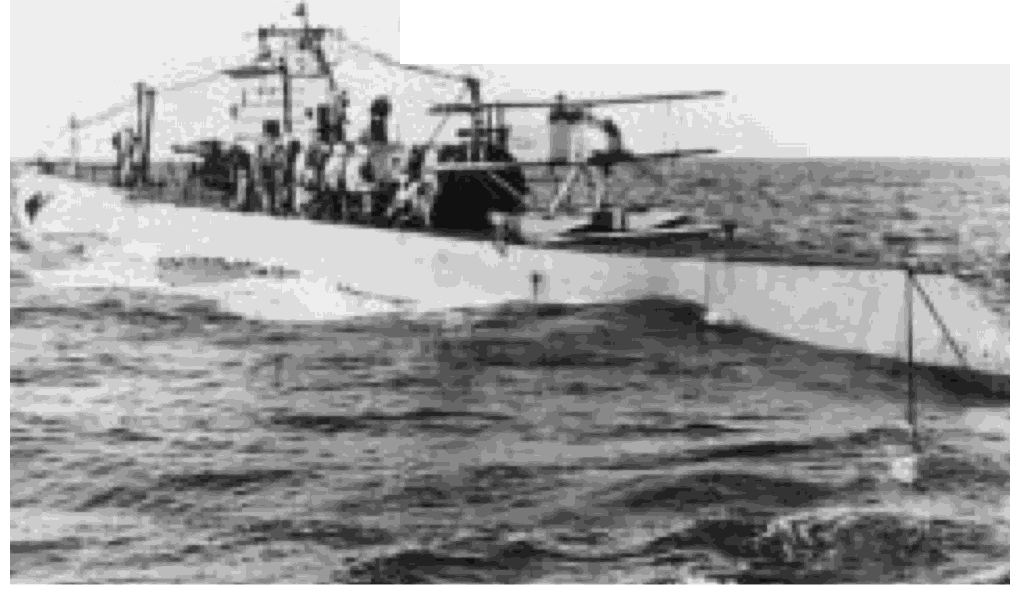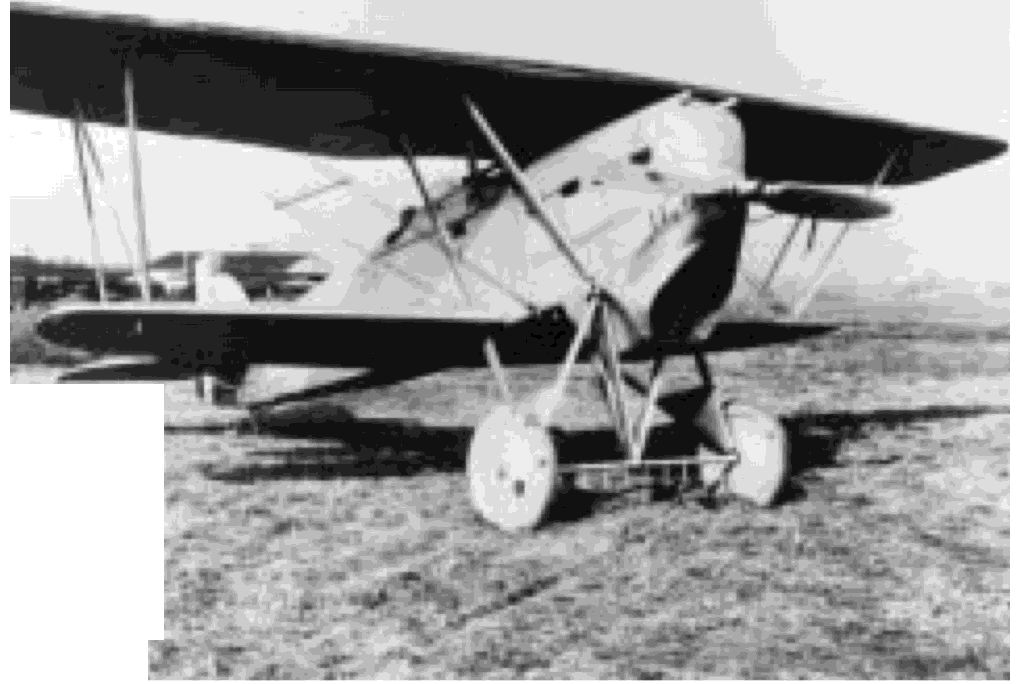

1926-Contin ued
28 July
The submarine S-l, commanded by Lieutenant
C. B. Momsen, surfaced and launched a Cox-Klemin XS-
2 seaplane, flown by Lieutenant D. C. Allen. It also
recovered the aircraft and submerged completing the
first cycle of operations in a series of tests investigating
the feasibility of basing aircraft on submarines.
..
SOl demonstrates the feasibility
of
operating aircraft from sub-
marines in tests with XS-2 seaplane, 19261053777
9 August
In a day of tests to determine the speed
with which aircraft could be operated at sea, pilots of
VF Squadron 1 completed 127 landings aboard
Langley.
As a result of the experience gained, the
same squadron later landed 12 planes in 21 minutes
under the emergency conditions created when the
ship ran into a heavy mist.
18 August
A contract was let to the Aircraft
Development Corporation, Detroit, Mich., for a metal-
clad airship designated ZMC-2. The descriptive term
"metal-clad" resulted from the fact that the ZMC-2's
lightly framed hull was covered with gas-tight stressed-
aluminum skin. It was also to be pressure-rigid in that
the shape of the hull was to be maintained by positive
internal gas pressure.
27 August
Commander John Rodgers, Naval Aviator
No.2, on a flight from NAS Anacostia, D.C., crashed in
the Delaware River near the Naval Aircraft Factory
dock and received injuries from which he died on the
same day.
22 October
In a display of tactics developed by VF
Squadron 2, Lieutenant Commander Frank D. Wagner
led the F6C-2 Curtiss fighters in a simulated attack on
the heavy ships of the Pacific Fleet as they sortied
UNITED STATES NAVAL AVIATION
1910-1995
65
from San Pedro. Coming down in almost vertical dives
from 12,000 feet at the exact time of which the fleet
had been forewarned, the squadron achieved com-
plete surprise and so impressed fleet and ship com-
manders with the effectiveness of their spectacular
approach that there was unanimous agreement that
such an attack would succeed over any defense. This
was the first fleet demonstration of dive-bombing and
although the tactic had been worked out by the
demonstrating squadron in an independently initiated
project, the obvious nature of the solution to the prob-
lem of effective bomb delivery was evident in that the
same tactic was similarly and simultaneously being
developed by VF Squadron 5 on the east coast.
13 November
Lieutenant Christian F. Schilt, USMC,
flying an R3C-2, took second in the Schneider Cup
Race at Hampton Roads, Va., with an average speed of
231.363 mph. This was the last Navy participation in
international racing competition.
19 November
Maryland
(BB 46) conducted experi-
mental firing with the Mark XIX antiaircraft fire control
system which had been developed by the Ford
Instrument Company and which incorporated a stabi-
lized line of sight to aid in tracking approaching air-
craft.
13 December
Rear Admiral Joseph M. Reeves, com-
manding Aircraft Squadrons, Battle Fleet, reported on
the results of the first dive bombing exercise ("light
bombing," as it was then called) to be conducted in
the formal fleet gunnery competition. One Marine and
two Navy fighter squadrons and three Navy observa-
tion squadrons participated. The Marine and Navy
fighters made 45 degree dives from 2,500 feet and at
r --
1-- .
L.
FB-5 fitted for longitudinal arresting wires
458533
 |
19 |
 |